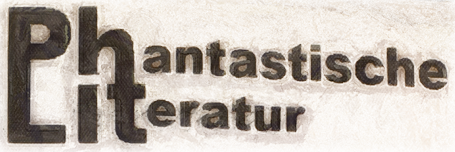Gerade darüber gestolpert, sieht spannend aus.
About The American Weird
Hitherto classified as a form of genre fiction, or as a particular aesthetic quality of literature by H. P. Lovecraft, the weird has now come to refer to a broad spectrum of artistic practices and expressions including fiction, film, television, photography, music, and visual and performance art. Largely under-theorized so far, The American Weird brings together perspectives from literary, cultural, media and film studies, and from philosophy, to provide a thorough exploration of the weird mode. Separated into two sections – the first exploring the concept of the weird and the second how it is applied through various media – this book generates new approaches to fundamental questions: Can the weird be conceptualized as a generic category, as an aesthetic mode or as an epistemological position? May the weird be thought through in similar ways to what Sianne Ngai calls the zany, the cute, and the interesting? What are the transformations it has undergone aesthetically and politically since its inception in the early twentieth century? Which strands of contemporary critical theory and philosophy have engaged in a dialogue with the discourses of and on the weird? And what is specifically “American” about this aesthetic mode?
As the first comprehensive, interdisciplinary study of the weird, this book not only explores the writings of Lovecraft, Caitlín Kiernan, China Miéville, and Jeff VanderMeer, but also the graphic novels of Alan Moore, the music of Captain Beefheart, the television show Twin Peaks and the films of Lily Amirpour, Matthew Barney, David Lynch, and Jordan Peele.
Table of contents
Acknowledgements
Contributors
1.Introduction: Conceptualizations, Mediations, and Remediations of the American Weird
Julius Greve (University of Oldenburg) and Florian Zappe (University of Göttingen)
Part One: Concept
2. A Doxa of the American Weird
Dan O'Hara (Independent Scholar, UK)
3. The Oozy Set: Toward a Weird(ed) Taxonomy
Johnny Murray (Independent Scholar, UK)
4. Validating Weird Fiction as an (Im)Possible Genre
Anne-Maree Wicks (University of Southern Queensland, Australia)
5. Woke Weird and the Cultural Politics of Camp Transformation
Stephen Shapiro (University of Warwick, UK)
6. The Weird in/of Crisis, 1930/2010
Tim Lanzendörfer (University of Frankfurt, Germany)
7. After Weird: Harman, Deleuze, and the American "Thing"
Daniel D. Fineman (Occidental College, USA)
8. Concerning A Deleuzean Weird: A Response to Dan Fineman
Graham Harman (Southern California Institute of Architecture, USA)
Part Two: Medium
9. Get Out, Race and Formal Destiny (on Common Weirdness)
Eugenie Brinkema (Massachusetts Institute of Technology, USA)
10. From a Heap of Broken Images Towards a Postcolonial Weird: Ana Lily Amirpour's Western Landscapes
Maryam Aras (University of Bonn, Germany)
11. “It is in Our House Now”: Twin Peaks, Nostalgia, and David Lynch's Weird Spaces
Oliver Moisich and Markus Wierschem (University of Paderborn, Germany)
12. Demolishing the Blues: Captain Beefheart as Modernist Outsider
Paul Sheehan (Macquarie University, Australia)
13. Weird Visual Mythopoeia: On Matthew Barney's Cremaster Cycle
Florian Zappe (University of Göttingen, Germany)
14. Hidden Cultures and the Representation and Creation of Weird Reality in Alan Moore's Providence
Alexander Greiffenstern (Independent Scholar, Germany)
15. Alien Beauty: The Glamour of the Eerie
Fred Francis (Independent Scholar, UK)
16. Conspiracy Hermeneutics: The Secret World as Weird Tale
Tanya Krzywinska (Falmouth University, UK)
17. Afterword: Weird in the Walls
Roger Luckhurst (Birkbeck, University of London, UK)
Link zum Verlag: https://www.bloomsbury.com/us/…Rw3Em9uXQYj5sy_dBvF8MqmaA

